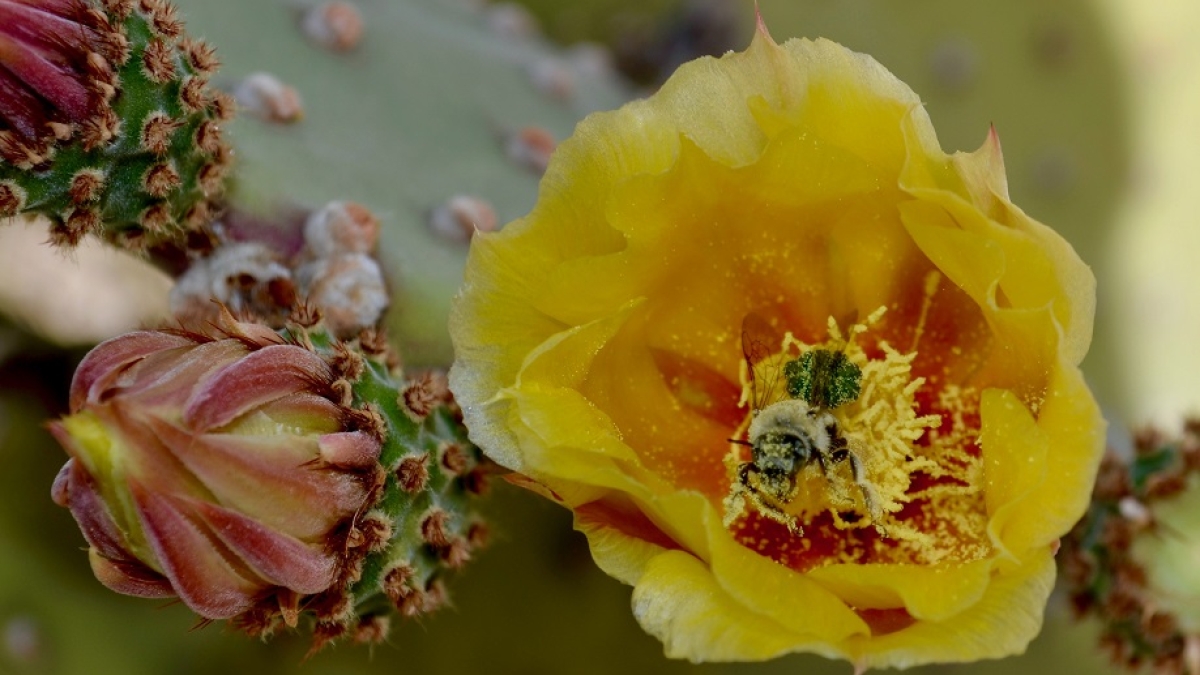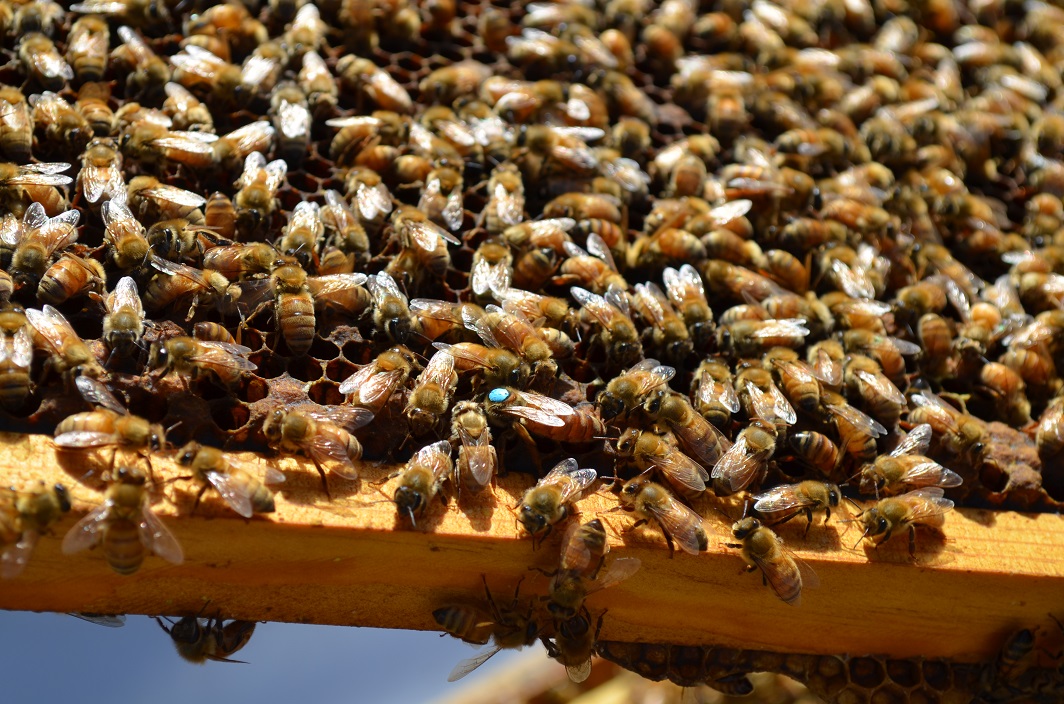ASU researchers discover more than 100 viruses in honeybees

A team of School of Life Sciences and Biodesign researchers discovered more than 100 unique viruses in honeybee populations. Understanding these viruses could help bee researchers determine which are important and which are detrimental for colony health. Photo by Sandra Leander/ASU
With bee populations on the decline, researchers have a growing interest in the viruses that may be affecting them. However, with the exception of a few well-known viruses, very little is known about virus populations in bees.
A team of researchers in Arizona State University’s School of Life Sciences, led by a collaboration between the labs of life sciences professors Arvind Varsani and Brian Smith, decided to change that by conducting the first ever mass genomic study on bee viruses.
In this new study, published in July in the scientific journal “Infections, Genetics and Evolution,” Simona Kraberger, an assistant research scientist in Varsani’s lab, and Chelsea Cook, a postdoctoral scholar in Smith’s lab, identified more than 100 unique viruses in two subspecies and two different castes of honeybees.
“It’s not beyond the realm of possibilities that even in different subspecies of bees or different castes of bees, that they would have different viruses because those bees are doing totally different things, they’re behaving in totally different ways, they are experiencing totally different worlds,” Cook said. “Nurse bees are inside the colonies. They’re interacting with just larvae and each other whereas foragers are very on their own, interacting with the outside world, visiting flowers. To think that those two jobs have the same viruses, it’s just not going to be true.”
Because nurse bees are secluded, staying in the hive and only interacting with other members of the colony, Kraberger and Cook predicted that foragers would contain many more viruses. However, that’s not what they found.
They discovered more than 100 unique viruses, belonging to three classes of viruses, the most prevalent of those being microviruses, which infect bacteria.
Of the 70 microviruses they found, nurses housed 56 while foragers had only 12. In addition, there was a big difference between the two subspecies as the Italian bees had 51 microviruses and New World Carniolan contained only 19.
But what does this mean? In short, that more research is needed.
“One could build on a variety of hypotheses and my hypothesis is that perhaps the best they can do in that system is actually immunize themselves so the more diverse set of viruses you have, the better the immunity you have to anything,” said Varsani, associate professor in the Biodesign Center for Fundamental and Applied Microbiomics. “So, in that context, if you want to be the closest to your young, then surely what you want to do is be as clean as possible, or immune as possible, so you aren’t shedding anything.”

Nurse bees stay inside the hive and care for larvae while forager bees explore the environment collecting nectar. However, researchers discovered that nurse bees had many more viruses than foragers. Now, they aim to figure out why. Photo by Sandra Leander/ASU
Now that they’ve identified the viruses, the group has several questions to pursue. Are some of the viruses beneficial while others are harmful? Are certain viruses keeping others in check? Is having a large variety of viruses positive or negative?
Kraberger has been studying viruses in a variety of organisms from plants to big cats since her earning PhD and she said the variety of viruses in bees is as diverse as she’s seen.
But is the variety of viruses seen in the bees a reason why bees are perishing? Not necessarily.
“One thing I will say is that viruses, even though they have a bad rap, are not all bad,” Kraberger said. “Viruses are very important in the ecosystem, and though they are going to infect something, they are good or bad for one thing and not for another.”
For example, viruses modulate bacteria in your stomach to make sure that one doesn’t take over and cause an illness. Viruses regulate fungi that can wipe out plant species, and they help balance the carbon cycle in the ocean.
However, scientists have discovered only about 1% of the virus population, Varsani said, and typically, the viruses are only studied when they cause a severe illness.
Understanding how virus populations regulate bee health and behavior could be an important step in learning more about viruses because they have social networks most equivalent to those found in humans.
“Social insects are good indicators of high interaction so can we then start using them as models for interaction networks. So, if you want to look at spread of a disease within a social community, social insects are one of the best ways to study them for the ways things move around,” Varsani said. “Do they have certain tipping points where they are fine, but then a change could wipe out the population? What we have done is start mapping the landscape and we’ve just unfolded a small part of it. Now we need to get unfold the entire larger part and chart the entire territory of viruses and figure out what’s there.”
More Science and technology

ASU student-run podcast shares personal stories from the lives of scientists
Everyone has a story.Some are inspirational. Others are cautionary. But most are narratives of a person’s path, sometimes a…

The meteorite effect
By Bret HovellEditor's note: This story is featured in the winter 2025 issue of ASU Thrive.On Nov. 9, 1923, Harvey Nininger saw…

Why your living environment defines how people perceive you
Stereotypes are pervasive.We've all heard of stereotypes based on gender, race, age or religion. But what about making an…